With its pristine coastline, tranquil cherry blossom forests, and ancient temples, Shimoda of Shizuoka Prefecture, is the perfect place to escape the busyness of life. It’s why many city-dwellers travel to this coastal city on weekends and holidays. Discover culture and sublime coastal beauty at Shimoda in the Izu Peninsula.
Table of Contents
An Intro to Shimoda
Japan is undoubtedly one of the most beautiful countries on the Pacific Ocean. It is among the most visited countries in the Asia-Pacific region.
Shimoda is often lost amid the many other tourist destinations in Japan, but it's just as worth visiting as any of them.
This hidden gem of Japan, Shimoda, lies in the Izu Peninsula, carved by nature with beautiful mountains and coastlines in Shizuoka Prefecture.
Besides natural beauty, the coastal town of Shimoda is also a place where modern Japanese history began. In 1854, it became the first Japanese port to open to foreign commerce. The treaty brought an end to Japan's more than 200 years long self-imposed isolation and allowed the country to conduct trade with western countries.
※ MLIT, “Port of Shimoda”
To get to Shimoda, you can take a train to Shimoda Station from Atami, a stop on the Tokaido Shinkansen. However, to get around Shimoda, we recommend renting a car or getting familiar with the bus system, as trains do not run throughout the area.
Writer's Pick
Shimoda's Natural Attractions
Shimoda is known for its nature, with its laid-back atmosphere and beautiful beaches.
Here’s 7 ways to enjoy the serene coastal city of Shimoda and the nature it has to offer.
1. Enjoy Sunbathing at White-sand Shirahama Beach
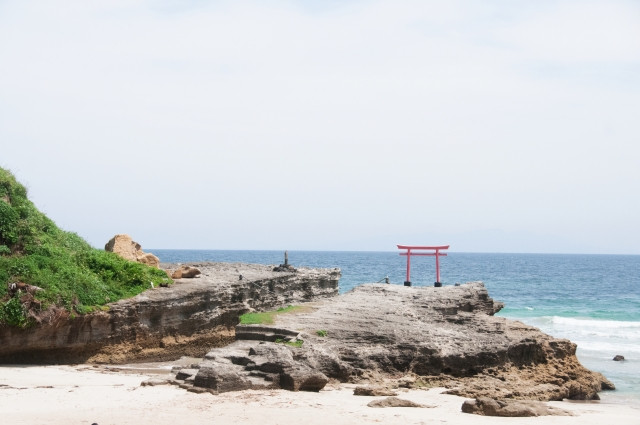
What's better than watching the sunset at one of Japan's most famous beaches? Shirahama Beach is a must-see destination for anyone visiting Izu! First, to clarify, Shirahama Beach is split into Shirahama Ohama Beach and Shirahama Chuo Beach. Many go to Shirahama Ohama as it’s the biggest beach in the Izu Peninsula. Of course, you can enjoy things like swimming, surfing and such when the beaches are open for swimming season. Explore the many shops and restaurants nearby or simply walk (or even cycle!) along its 700-meter stretch of beautiful white sandy beach. Summer is naturally the peak season when the beach gets packed with tourists from all over Japan.
Along the shore, in between the two beaches previously mentioned, is Shirahama Jinja, a lovely Shinto shrine whose red torii is precariously placed atop a sea cliff. Actually, it’s not the only red torii by the sea in Shimoda as Misagojima, a small island off of Madoga Park, also has one.
Shimoda has many other famous beaches to explore, including Iritahama, Toji, and so on.
※Shimoda City, “Shirahama Ohama Beach”
2. Visit Inubashiri Island
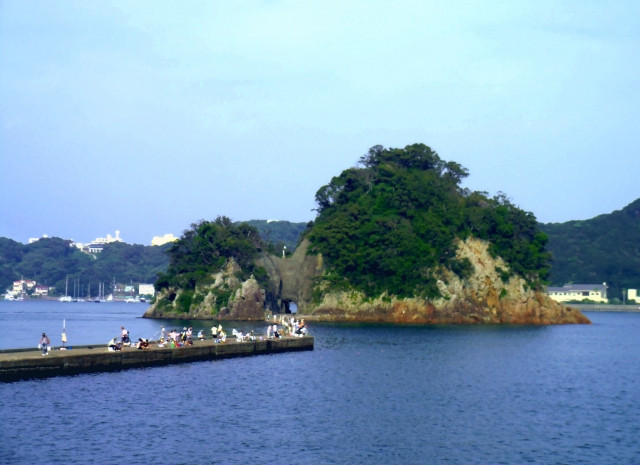
Inubashiri Island is a small island that is connected via a long concrete embankment to Shimoda (or Shiroyama) Park. This embankment is also a favorite for locals for fishing. But most tourists visit this site to get a great view of Shimoda and Shimoda Harbor. The walkway to the island is also a very nice stroll. The island itself doesn’t have much, but there is a lighthouse on the other side if you go through the tunnel on the island.
3. See Underwater Marine Life at Shimoda Aquarium
Shimoda Aquarium houses various species of aquatic animals. Rather than being in one building like most aquariums, it has a unique structure. The facilities are built around a bay, and one of the main buildings is in the bay itself, connected to the rest of the facilities by floating decks. Thus the arguably most popular attraction - the dolphins - are able to swim freely in the bay. So not only can you see the dolphin show - which you can opt to see even more up close - you can feed them, snorkel and go diving with them if you so wish! (for a separate fee of course)
Besides dolphins, they have sea turtles, seals, penguins, hundreds of species of fish, and more!
Entrance Fee: 2,100 yen (Adult); activities charge separate fees
※ Shimoda Aquarium
4. Explore Shimoda Park
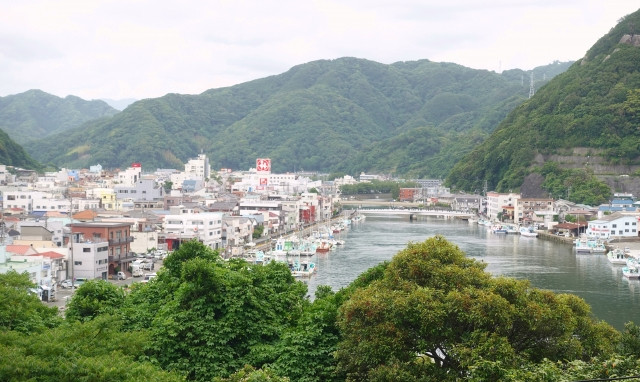
Shimoda Park, also known as Shiroyama Park, is a perfect spot for photography. The wooded paths make strolling through the park a great way to relax and clear your mind. Not only that, it’s known especially for its hydrangeas in June, so flower-enthusiasts and photographers alike come to view the purple and blue beauties then. You can also see cherry blossoms in spring, so if you’re lucky, you can get a shot of the beautiful pink flowers with the sea in the background. Within the park, you can find a monument to the start of U.S.-Japan relations. There’s also several observatories in the park, so you can get an amazing view of the Shimoda coast below. One of the observatories overlooks the aforementioned Shimoda Aquarium too.
※ Shimoda City, “Shimoda Park”
5. See the Artwork of Oceanic Waves at Ryugu Sea Cave
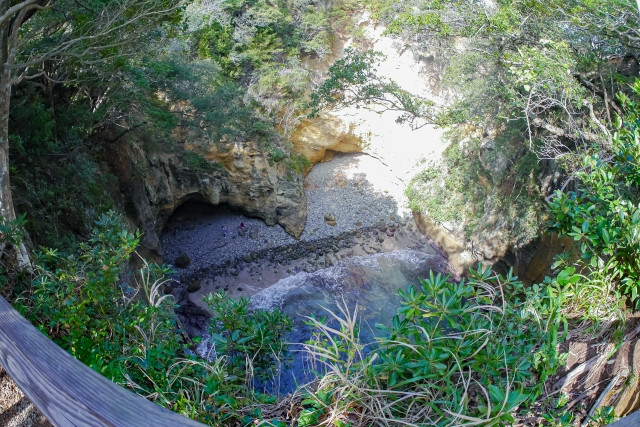
Ryugu Sea Cave is arguably one of the most beautiful sea caves in the world. It’s a popular date-spot because the whole area itself is in the shape of a heart (which can only be seen from overhead, not really while you’re in the cave itself.) You’re able to see into the cave because of natural erosion which caused the roof to cave in - lucky for all the romantics in the world who can view a naturally formed heart in nature with their loved one. Make sure to wear comfortable shoes as it’s a hike to, around and in the cave.
You'll find another adventure hotspot, Toji Sand Skiing Field, at Toji Beach near the cave. You can basically slide down a steep slope of sand. People even rent sleds so you can go down the slope at even higher speeds.
6. Get a Mesmerizing View of the Pacific at Mount Nesugatayama Observatory

The Mount Nesugatayama Observatory is another beautiful sightseeing spot with a 360-degree view of the beautiful Izu peninsula coastline and the mighty Pacific Ocean. The view is considered one of the 伊豆三景 (Izu Sankei - 3 most beautiful views in Izu). You can take the Shimoda Ropeway up to the observatory for 1250 yen roundtrip. At the top, not only can you enjoy the view but you can also visit the beautiful Aizendo Temple, as well as the seasonal flowers blooming around the summit.
7. Take a stroll in Tsumekizaki Park
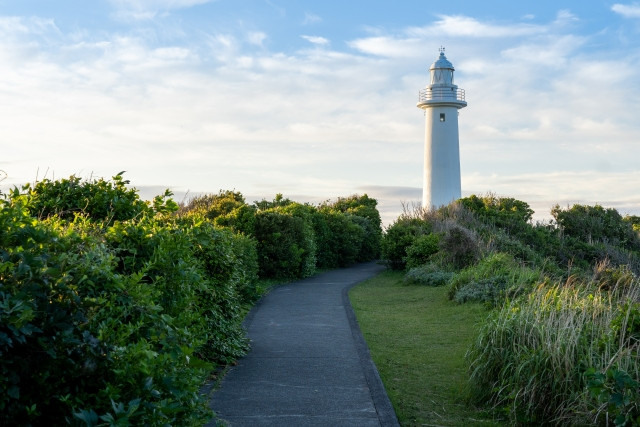
Tsumekizaki Park is a picturesque location on Shimoda's coast where you can enjoy the sunset with nature's beauty. Unlike other public parks in Shimoda, it is more serene and secluded and has a beautiful view of the sun setting over the Pacific.
The prominent feature of the park is Tsumekizaki Lighthouse. The blue water and white lighthouse make it a stunning contrast to the landscape. Moreover, it provides a fantastic view over the Izu Seven Islands and white daffodils which bloom in January.
History and Culture in Shimoda
As mentioned above, Shimoda is a place of historical significance for Japan, and there’s lots of reminders of this history scattered throughout the area.
8. Historic Perry Road

Perry Road was the historic road that served as a conduit for signing the Shimoda Treaty. This event is significant in modern Japanese history, as this agreement ended the self-imposed isolation of Japan and opened trade with western countries, as mentioned earlier.
Not only is this path of extreme historic value but also very picturesque as well! The streets are stone-paved, and you can find traditional architecture all around. There is a canal that runs along the middle and fun locally owned and run shops along each side.
9. Gyokusenji
The Buddhist temple of Gyokusenji, like Ryosenji above, looks very simple from the outside at first glance, but is also a key historical place for Japan-US diplomatic relations. Gyokusenji not only served as a cemetery for American sailors who had passed away during the journey to Japan, but also became the first US consulate in Japan. The grounds include a memorial hall to the first consul general, Townsend Harris. In 1951, it was named a National Historic Site of Japan along with Ryosenji.
※Gyokusenji
10. Ryosenji Temple
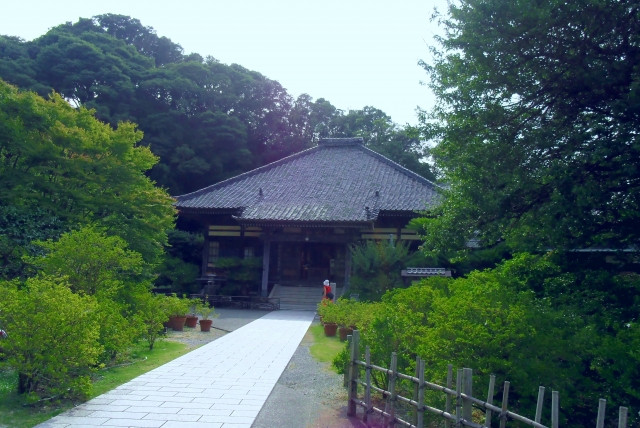
Ryosenji Temple played an essential role in Japan-US relations, as it was the final destination of Perry Road and the very place where the Shimoda Treaty was signed, forcing Japan to abandon its isolationist ways and begin trade with the US and other countries.
Today, Ryosenji is not only a religious place of worship, but a physical landmark of the negotiations that changed Japanese history. You can even visit a museum on the temple grounds dedicated to this event where you can find over 3,000 artifacts and articles relating to the events of that fateful day and time.
※Ryosenji
11. Uehara Museum of Art
The intersection of Buddhist art and modern artwork, the Uehara Museum of Art is a must for those interested in Japanese art. The museum covers a wide range of works including from the Heian and Kamakura periods, ancient transcriptions from the Nara era, to foreign artists such as Matisse and Picasso, and even modern Japanese works. It's also a great spot to unwind after a day of exploring Shimoda.
Open: 9:30 to 16:30 (last entry at 16:00)
Fee: 1000 yen for adults, 500 yen for students, free for high school students and below
※Uehara Museum of Art
Conclusion
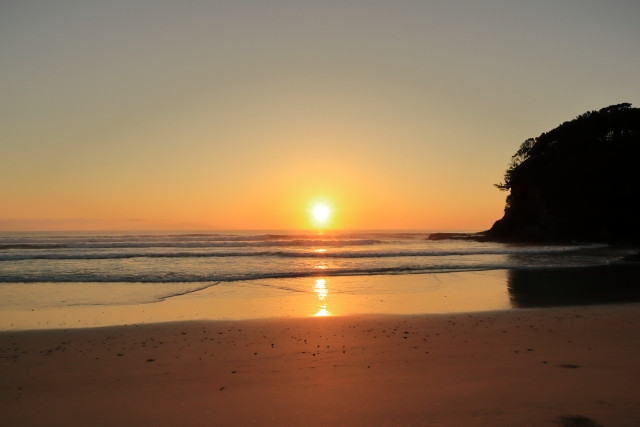
Visitors to Shimoda will experience an incredible mix of nature and history but in a much quieter way than the major attractions in Japan - except for the beach during summer as everyone wants to have some fun in the sun!Home to some of Japan's oldest shrines and breathtaking landscapes, this would be an ideal location for anybody seeking respite from the city life as well as a peek of the start of modern Japanese history. It’s also a great way to see how a historic event is commemorated - and even made into a tourist attraction with Perry trinkets and namesakes! Keep an eye out for those!
For other things to do in Shizuoka Prefecture, check our dedicated article:







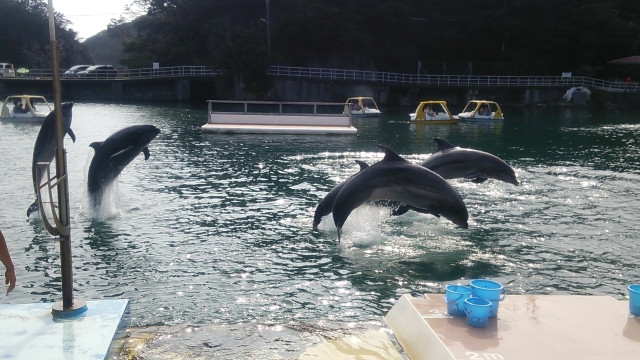













.jpg)











